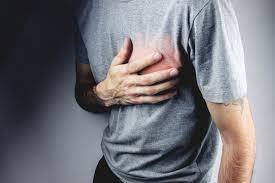In every multicellular lifeform, nutrients need to be delivered to various parts of its body while wastes needs to be collected and expelled from the body.
Vertebrates, over the course of many million years, have evolved a system known as the cardiovascular system to perform this task. It is also known as the blood circulatory system and it comprises the heart and all the blood vessels in the body. In this article, we shall take a look at the various diseases that affect the cardiovascular system and their characteristic symptoms.
Atherosclerosis
Atherosclerosis is characterized by the hardening of the arteries as a result of fatty deposits sticking to the lining of the blood vessels. This happens when an individual has a diet that is extremely high in fat. Often, this condition can have a detrimental effect on one’s health as it has been linked to high blood pressure. If left untreated, this condition can eventually lead to kidney damage and even strokes.
Myocardial Infarction
Myocardial infarction is the medical term for heart attack. It usually occurs when the heart’s blood supply is cut off. Depending on the severity and time taken to seek treatment, heart attacks can range from minor to fatal. Characteristic symptoms of heart attack includes chest pain or tightness, pain in the jaw and also pain that radiates from the shoulder to the left arm. Other symptoms include shortness of breath and light-headedness.
Mitral Valve Prolapse
The mitral valve is a valve in the heart that separates the atrium and the ventricle on the left side. If an individual is diagnosed with Mitral Valve prolapse, then their mitral valve prolapse (bulges out) and as a result, it does not close evenly. One of the characteristic symptoms of this condition is the fluttering of the heart (or rapid heartbeats) called palpitations. Other symptoms include shortness of breath during exercise and numbness in the hands and feet.
Angina Pectoris
Angina pectoris is the medical term which is used to describe “chest pain”. Alternatively, people also describe it as a crushing or a burning sensation in the chest. It usually happens when the heart muscles do not get enough blood as one or more of its arteries are blocked or narrowed. If this condition persists, then the heart becomes starved of oxygen and a heart attack ensues.
Cardiac Ischemia
Cardiac Ischemia is a medical term which describes the condition where the heart muscles do not receive enough oxygen. Symptoms include fast heartbeat, fatigue, shortness of breath, jaw and neck pain, pain in the arms and shoulders. The underlying cause for this condition is atherosclerosis, where plaque builds up on the walls of the arteries and restricts blood flow.
Stroke
Stroke is a condition where the vessels that supply blood to the brain either become blocked or ruptured. This causes the brain to become starved of oxygen. Characteristic symptoms of stroke include sudden numbness on one side of the face, arm or leg, sudden confusion and unexplained difficulty talking or understanding speech, extreme headaches, dizziness, loss of balance. Explore more intriguing concepts from the human heart and digestive system to plasma membrane and cell structure only at BYJU’S. Alternatively, subscribe to BYJU’S YouTube channel to explore everything in science!





